Website Temporary Closed
Atari 2600
The Atari 2600, released in 1977, is the first successful video game console to use plug-in cartridges instead of having one or more games built in. Originally known as the Atari VCS—for Video Computer System—the machine's name was changed to "Atari 2600" (from the unit's Atari part number, CX2600) in 1982, after the release of the more advanced Atari 5200. It was wildly successful, and during the 1980s, "Atari" was a synonym for this model in mainstream media. The 2600 was typically bundled with two joystick controllers, a conjoined pair of paddle controllers, and a cartridge game.
Atari had spun off an engineering think-tank in 1975 called Cyan Engineering to research next-generation video game systems, and had been working on a prototype known as "Stella" (named after one of the engineers' bicycles) for some time. Unlike prior generations of machines which used custom logic to play a small number of games, Stella's core was a complete CPU, the famous MOS Technology 6502 in a cost-reduced version, known as the 6507. It was combined with a RAM-and-I/O chip, the MOS Technology 6532, and a display and sound chip of their own design known as the TIA, for Television Interface Adaptor.
[collapse collapsed title=read more...]
Beyond those three, the machine contains just one more chip, a standard CMOS logic chip, bringing the total chip count to the very low and cost-effective number of four. At first the design was not going to be cartridge-based, but after seeing a "fake" cartridge system on another machine they realized they could place the games on cartridges essentially for the price of the connector and packaging.
In August 1976 Fairchild Semiconductor released their own cartridge-based system, the Channel F. Stella was still not ready for production, but it was clear that it needed to be before there were a number of "me too" products filling up the market – which had happened after they invented PONG. Atari simply didn't have the cash flow to complete the system quickly, given that sales of their own PONG systems were cooling. Nolan Bushnell eventually turned to Warner Communications, and sold the company to them in 1976 for $28 million on the promise that Stella would be produced as soon as possible.
Key to the eventual success of the machine was the hiring of Jay Miner, a chip designer who managed to squeeze an entire breadboard of equipment making up the TIA into a single chip. Once that was completed and debugged the system was ready for shipping. By the time it was released in 1977, the development had cost about US$100 million.
The initial price was $199 with a library of 9 titles. In a play to compete directly with the Channel F, Atari named the machine the Video Computer System (or VCS for short), as the Channel F was at that point known as the VES, for Video Entertainment System. When Fairchild learned of Atari's naming they quickly changed the name of their system to become the Channel F.
However both systems were now in the midst of a vicious round of price-cutting: PONG clones made obsolete by these newer and more powerful machines sold off their boxes to discounters for ever-lower prices. Soon many of the clone companies were out of business, and both Fairchild and Atari were selling to a public that was completely burnt out on PONG. In 1977 Atari sold only 250,000 VCSs. In 1978 only 550,000 units from a production run of 800,000 were sold, requiring further financial support from Warner to cover losses. This led directly to the disagreements that caused Atari founder Nolan Bushnell to leave the company in 1978.
Once the public realized it was possible to play video games other than PONG, and programmers learned how to push its hardware's capabilities, the 2600 gained popularity. Fairchild had by this point given up, thinking they were a passed fad, thereby handing the entire quickly growing market to Atari. By 1979, the 2600 was the best selling Christmas present (and console), mainly because of its exclusive content, and a million were sold that year.
Atari then licensed the smash arcade hit Space Invaders by Taito, which greatly increased the unit's popularity when it was released in May 1980, doubling sales again to over 2 million units. The 2600 and its cartridges were the main factor behind Atari grossing more than $2 billion in profits in 1980. Sales then doubled again for the next two years, with almost 8 million units selling in 1982.
During this period, Atari expanded the 2600 family with two other compatible consoles. They designed the Atari 2700, a wireless version of the console that was never released due to a design flaw. The company also built a sleeker version of the machine dubbed the Atari 2800 to sell directly to the Japanese market in early 1983, but it suffered from competition with the newly-released Nintendo Famicom.
During this period Atari continued to grow until it had one of the largest R&D divisions in Silicon Valley. They spent much of their R&D budget on projects that seemed rather out of place at a videogame (or even home computer) company, projects many of which never saw the light of day. Meanwhile several attempts to bring out newer consoles failed for one reason or another, although their home computer systems, the Atari 8-bit family sold reasonably if not spectacularly. Warner was more than happy anyway, as it seemed to have no end to the sales of the 2600, and Atari was responsible for over half of the company's income.
The programmers of many of Atari's biggest hits grew disgruntled with the company for not crediting game developers. For example, Rick Mauer, the programmer of Atari 2600 Space Invaders, received no credit and made only $11,000 for his efforts, in spite of the cartridge grossing more than $100 million in sales. Most notably, Warren Robinett, the lead programmer of Adventure, in protest against Atari's anonymity policy, hid his name in a secret room within the game. This was the very first "Easter egg"—a hidden treat or in-joke—a practice which continues in software development to this day. Many other programmers left the company and formed their own independent software companies.
The most prominent and longest-lasting of these third-party developers was Activision, founded in 1980, whose titles quickly became more popular than those of Atari itself. Atari attempted to block third-party development for the 2600 in court but failed, and soon other publishers, such as Imagic and Coleco, entered the market. Atari suffered from an image problem when a company named Mystique produced a number of pornographic games for the 2600. The most notorious of these, Custer's Revenge, caused a large number of protests from women's and Native American groups. Atari sued Mystique in court over the release of the game.
Atari continued to scoop up licenses during the shelf life of the 2600, the most prominent of which included Pac-Man and E.T. Public disappointment with these two titles and the market saturation of bad third-party titles are cited as big reasons for the video game crash of 1983. Suddenly Atari's growth meant it was losing massive amounts of money during the crash, at one point about $10,000 a day. Warner quickly grew tired of supporting the now-headless company, and started looking for buyers in 1984.
The basic layout of the 2600 is fairly similar to most consoles and home computers of the era. The CPU was the MOS Technology 6507, a cut-down version of the 6502, running at 1.19 MHz in the 2600. The 6507 included fewer memory address pins — 13 instead of 16 — and no external interrupts to fit into a smaller 28-pin package. Smaller packaging was, and still is, an important factor in overall system cost, and since memory was very expensive at the time, the 6507's small 8 KB of maximum external memory space wasn't going to be used up anyway. In fact memory was so expensive they couldn't imagine using up even 4K, and when they got a deal on 24-pin connectors for the cartridge socket, they were only too happy to thereby limit the games to 4K. Later games got around this limitation with bank switching.
The console had only 128 bytes of RAM for runtime data that included the call stack and the state of the game world. There was no frame buffer, as the necessary RAM would have been too expensive. Instead the video device had two bitmapped sprites, two one-line "missile" sprites, a one-pixel "ball," and a "playfield" that was drawn by writing a bit pattern for each line into a register just before the television scanned that line. As each line was scanned, a game had to identify the non-sprite objects that overlapped the next line, assemble the appropriate bit patterns to draw for those objects, and write the pattern into the register. By default the right side of the screen was a duplicate of the left; to control it separately, the software had to modify the patterns as the scan line was drawn. After the controller scanned the last active line, a more leisurely vertical blanking interval began, during which the game could process input and update the positions and states of objects in the world. Any mistake in timing produced visual artefacts, a problem programmers called racing the beam.
The video hardware gave the 2600 a reputation as one of the most complex machines in the world to program, but those programmers who understood it realized that such direct control over the video picture was also a source of flexibility. For example, although each sprite nominally had only one colour, it was possible to colour the rows differently by changing the sprite's colour as it was drawn. If the five hardware sprites were not enough for a game, a developer could share one sprite among several objects (as with the ghosts in Pac-Man) or draw software sprites, which was only a little more difficult than drawing a fixed playfield. The Pitfall! screen shot below demonstrates some of these tricks: the player is a multi-colour sprite, one sprite is multiplexed for the logs and the scorpion, and the swinging vine is drawn by software. Despite the hardware limitations, many Atari 2600 games had a lot of action on the screen, creating an engaging experience.
Although not formally discontinued, the 2600 was de-emphasized for two years after Warner's 1984 sale of Atari to Commodore Business Machines founder Jack Tramiel, who wanted to concentrate on home computers. In 1986 a new version of the 2600 was released (although it was planned for release two years earlier). The new redesigned version of the 2600, unofficially referred to as the 2600 Jr., featured a smaller cost-reduced form factor with a modernized Atari 7800-like appearance. The redesigned 2600 was advertised as a budget gaming system (under $50) that had the ability to run a large collection of classic games. With its introduction came a resurgence in software development both from Atari and from third parties. The Atari 2600 continued to sell in the USA and Europe until 1990, and continued to sell in PAL version in Asian nations until the early 1990s. Over its lifetime, an estimated 25 million units were shipped, and its video game library reportedly numbers more than 900 titles.
At the turn of the millennium, 25 years+ after the launch of the Atari 2600, new homebrew games for the system are still made and sold by hobbyists, several new titles are available each year, and the console and its old and new games are very popular with collectors because of its significant impact on video game and consumer electronics history and also due to its nostalgic value for many people. In addition, modern Atari 2600 clones remain on the market. One example is the Atari Classics 10-in-1 TV Game, manufactured by Jakks Pacific, which simulates the 2600 console with an NES on a Chip, and includes converted versions of 10 games, into a single Atari-brand-look-a-like joystick with composite video outputs for connecting directly to modern televisions or VCRs. Another is the TV Boy which includes 127 games in an enlarged joypad.
[/collapse]
- HOME


- PRODUCTS

- 3DO
- Amiga CD32
- Amstrad GX4000
- Atari 2600
- Atari 7800
- Atari Jaguar
- Atari Jaguar CD
- Atari Lynx
- Bandai Wonderswan
- Coleco
- Colecovision
- Famicom
- Famicom Disk System
- Grandstand
- JAMMA
- Mattel Intellivision
- MB
- Microsoft Xbox
- MSX
- Neo Geo AES
- Neo Geo CD
- Neo Geo MVS
- Neo Geo Pocket
- Nintendo 64
- Nintendo Game and Watch
- Nintendo Gameboy
- Nintendo Gameboy Advance
- Nintendo Gameboy Colour
- Nintendo Gamecube
- Nintendo NES
- Nintendo Virtual Boy
- PC Engine
- PC Engine CD
- Philips CDI
- Sega 32X
- Sega Dreamcast
- Sega Game Gear
- Sega Genesis
- Sega Master System
- Sega Mega CD
- Sega Megadrive
- Sega Nomad
- Sega Saturn
- Sony Playstation
- Sony Playstation 2
- Super Famicom
- Super Nintendo
- Texas Instruments
- Tiger Game Com
- Tomy
- Vectrex
- Japanese Video Game Imports
-

- MODIFICATIONS

- Switchless Modification
- Modification Sega 32X
- Modification Sega Dreamcast
- Modification Sega Megadrive
- Modification Neo Geo AES
- Modification Neo Geo CD
- Modification Nintendo NES
- Modification Sega Master System
- Modification Sega Mega-CD
- Modification Sega Nomad
- Modification Sega Saturn
- Modification Super Nintendo
-

- TECHNICAL INFO


- NEWS


- ABOUT US


- MEMBERS


- CONTACT US


Log on
x
Just In!

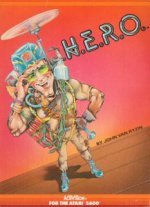
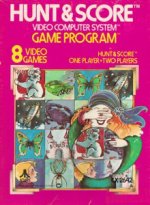

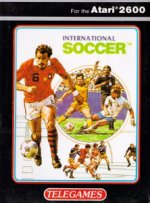

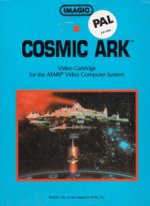
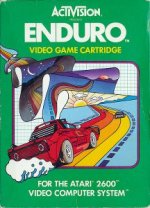
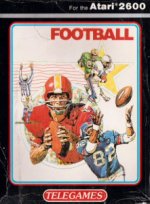
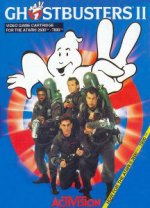
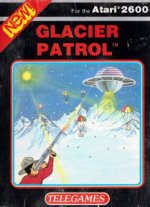

 Save time
Save time